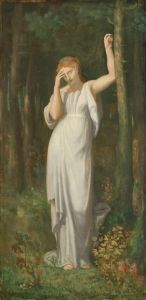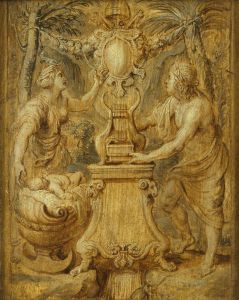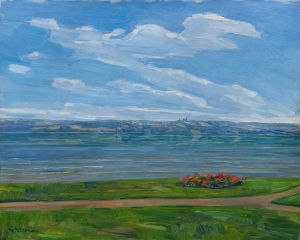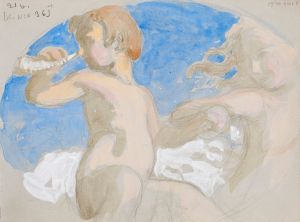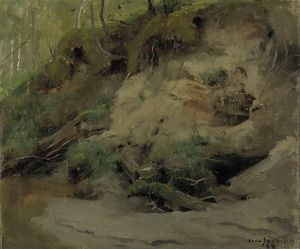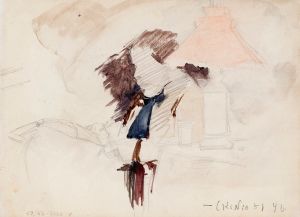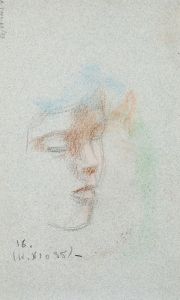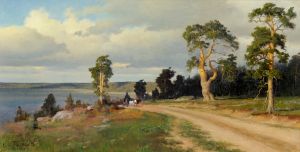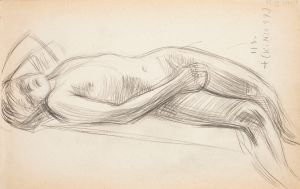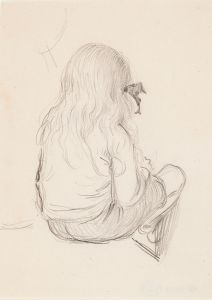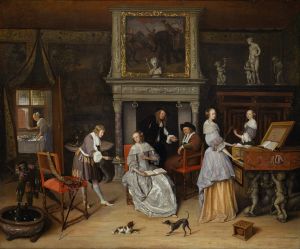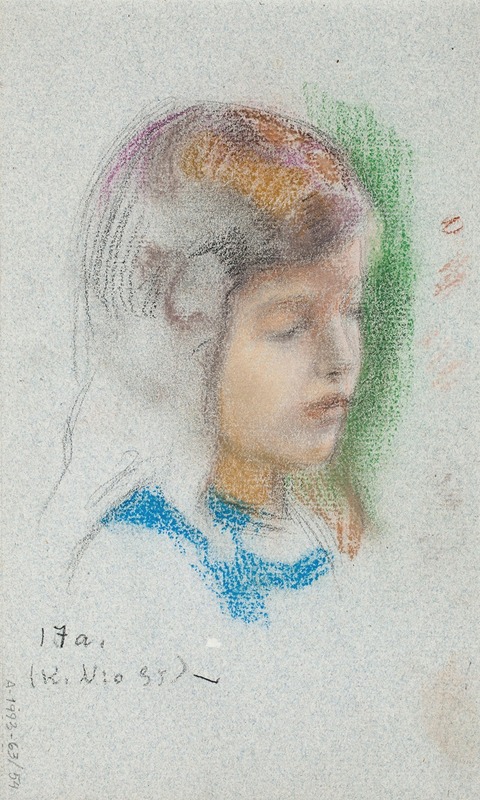
Tytän pää
A hand-painted replica of Eero Järnefelt’s masterpiece Tytän pää, meticulously crafted by professional artists to capture the true essence of the original. Each piece is created with museum-quality canvas and rare mineral pigments, carefully painted by experienced artists with delicate brushstrokes and rich, layered colors to perfectly recreate the texture of the original artwork. Unlike machine-printed reproductions, this hand-painted version brings the painting to life, infused with the artist’s emotions and skill in every stroke. Whether for personal collection or home decoration, it instantly elevates the artistic atmosphere of any space.
Eero Järnefelt was a Finnish painter, known for his contributions to the realist movement in Finnish art during the late 19th and early 20th centuries. He was part of the influential Järnefelt family, which included several prominent figures in Finnish culture and society. Eero Järnefelt's works often depicted the Finnish landscape and rural life, capturing the essence of the nation's natural beauty and the daily lives of its people.
"Tytän pää" is one of Järnefelt's notable works, although specific details about this painting are not widely documented. The title "Tytän pää" translates to "Girl's Head" in English, suggesting that the painting is likely a portrait focusing on the head or face of a young girl. Portraiture was a common genre for Järnefelt, who was skilled in capturing the human form and expression with a high degree of realism and sensitivity.
Järnefelt's style was heavily influenced by the realist movement, which emphasized the depiction of everyday subjects and scenes with accuracy and attention to detail. This approach was a departure from the more romanticized styles that preceded it, focusing instead on the truthful representation of the world. In his portraits, Järnefelt often conveyed the personality and mood of his subjects, using light and shadow to enhance their features and expressions.
The Finnish landscape and its people were central themes in Järnefelt's body of work. He was part of a group of artists known as the "Golden Age" of Finnish art, who sought to establish a national identity through their art. This period was marked by a burgeoning sense of Finnish nationalism, as the country was striving for cultural and political independence from Russia. Artists like Järnefelt played a crucial role in this movement by creating works that celebrated Finnish culture and nature.
While specific information about "Tytän pää" is limited, it can be assumed that the painting reflects Järnefelt's commitment to realism and his interest in portraying Finnish subjects. His portraits often feature individuals from various walks of life, depicted with dignity and respect. Järnefelt's ability to capture the subtleties of human expression and the nuances of light and shadow made his portraits particularly compelling.
Eero Järnefelt's contributions to Finnish art have been widely recognized, and his works continue to be celebrated for their technical skill and cultural significance. His paintings are held in various collections, including the Ateneum Art Museum in Helsinki, which houses many of his most important works. Through his art, Järnefelt has left a lasting legacy that continues to influence Finnish art and culture.
In summary, while detailed information about "Tytän pää" is scarce, Eero Järnefelt's reputation as a master of realist portraiture and his dedication to depicting Finnish life and landscapes provide context for understanding the significance of his work. His paintings remain an important part of Finland's artistic heritage, reflecting the nation's history and identity.






